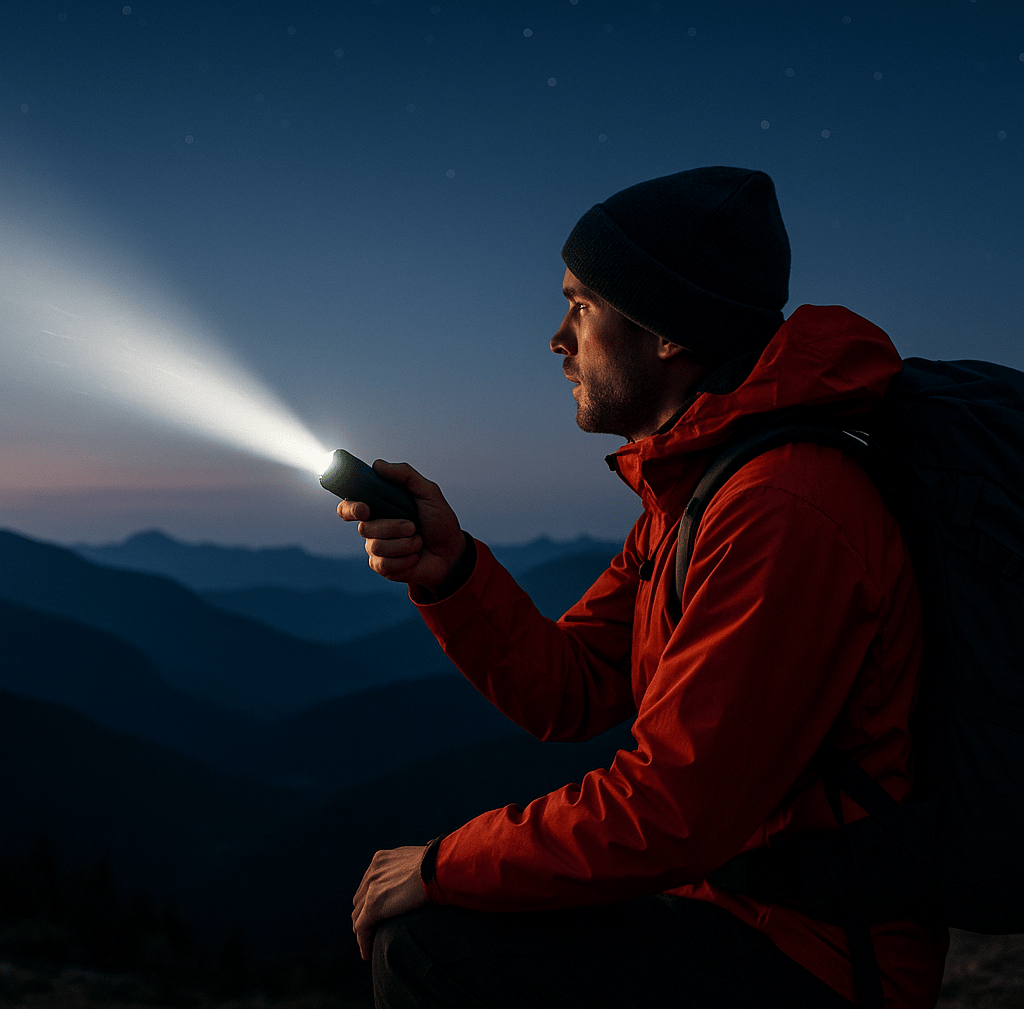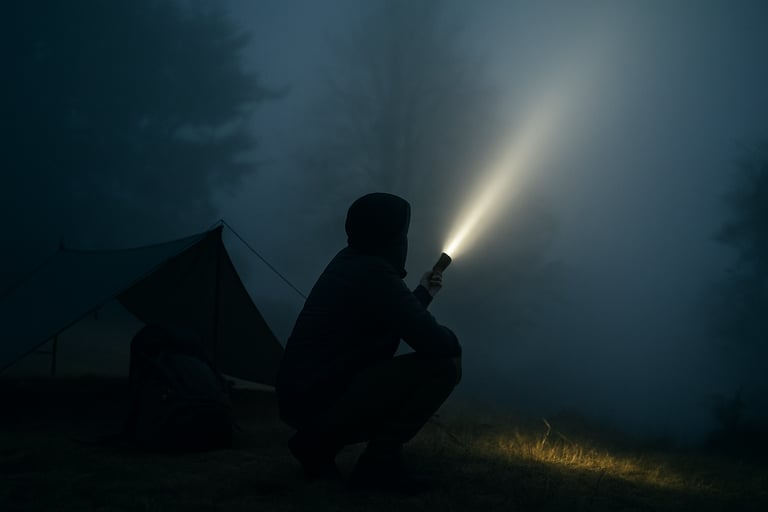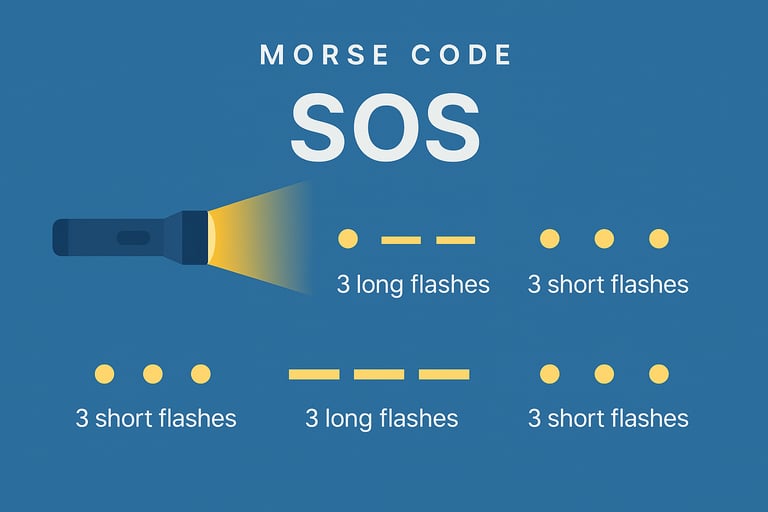Using Flashlight Signals for Rescue: A Guide to Wilderness SOS Communication
Learn how to use flashlight signals for wilderness rescue with this beginner-friendly guide. Discover the best survival signaling strategies, including the SOS light pattern, and how to maximize your chances of being seen in an emergency.


Using Flashlight Signals for Rescue: How to Communicate SOS in the Wilderness
Why Flashlight Signals Matter in Survival Situations
In a survival emergency, especially after dark, visual signals can often reach farther than sound. Flashlights, headlamps, or even a smartphone’s light can be life-saving tools when used to communicate distress. Knowing how to signal properly using light dramatically improves your odds of being found by rescuers. It’s one of several key methods to understand when learning how to signal for help in the wilderness.
How to Signal SOS with a Flashlight
The internationally recognized SOS signal is simple and effective. It follows the Morse code pattern of three short flashes, three long flashes, and three short flashes again. This can be done with any light source and is widely recognized by search and rescue teams. It’s part of a broader set of visual signals to call for rescue that can make you more visible to rescuers when every second counts.
Flash the pattern slowly and clearly: three quick flashes, pause, three long flashes (about 2 seconds each), pause, and three quick again. Wait a few seconds and repeat. Even if no one is nearby immediately, someone might see it from a great distance or from the air.
Best Places and Times to Use Light Signals
To get noticed, location is key. Try to signal from open, elevated ground like ridges, hills, or clearings. These spots give your light the best chance of being seen by planes, helicopters, or search teams.
The most effective times are dusk, night, or dawn, when the light will stand out the most. Avoid daytime signaling unless you’re using reflections or mirrors. And always conserve battery power by using intentional, repeating flashes rather than leaving the light on constantly.
Tips for Enhancing Flashlight Visibility
You can amplify your signal by reflecting the light off shiny objects. Use an emergency blanket, metal pot, water bottle, or any reflective material that can increase the beam’s reach. Another trick is to tie your flashlight to a string and slowly swing it in a circular motion. This creates moving light that’s easier for the human eye to spot, especially from far away.
If you’re traveling with a group, coordinate signaling shifts so you can conserve batteries while maintaining visibility throughout the night.
Avoiding Common Signaling Mistakes
A frequent mistake is using a steady light beam, thinking it’s more helpful. In reality, steady light blends into the environment and uses up power quickly. Repeating signals, especially the SOS pattern, are far more likely to be noticed and understood.
Also, many people forget to test their flashlight before a trip. Always check batteries, pack spares, and consider carrying a second light source just in case. They don't take up much space, and in an emergency, redundancy can make all the difference. Having backups and knowing how to use them is part of smart decision-making under pressure, which is crucial in survival situations.
Final Thoughts: A Simple Tool That Can Save Your Life
Flashlights aren’t just for lighting your way—they’re one of the most effective rescue tools you can carry. When you know how to use them to signal for help, especially with universal patterns like SOS, you’re far more likely to be found quickly. Practice before your trip, keep your light accessible, and stay prepared.




© 2025. All rights reserved About | Privacy Policy | Terms and Conditions | Affiliate Disclosure | Disclaimer


